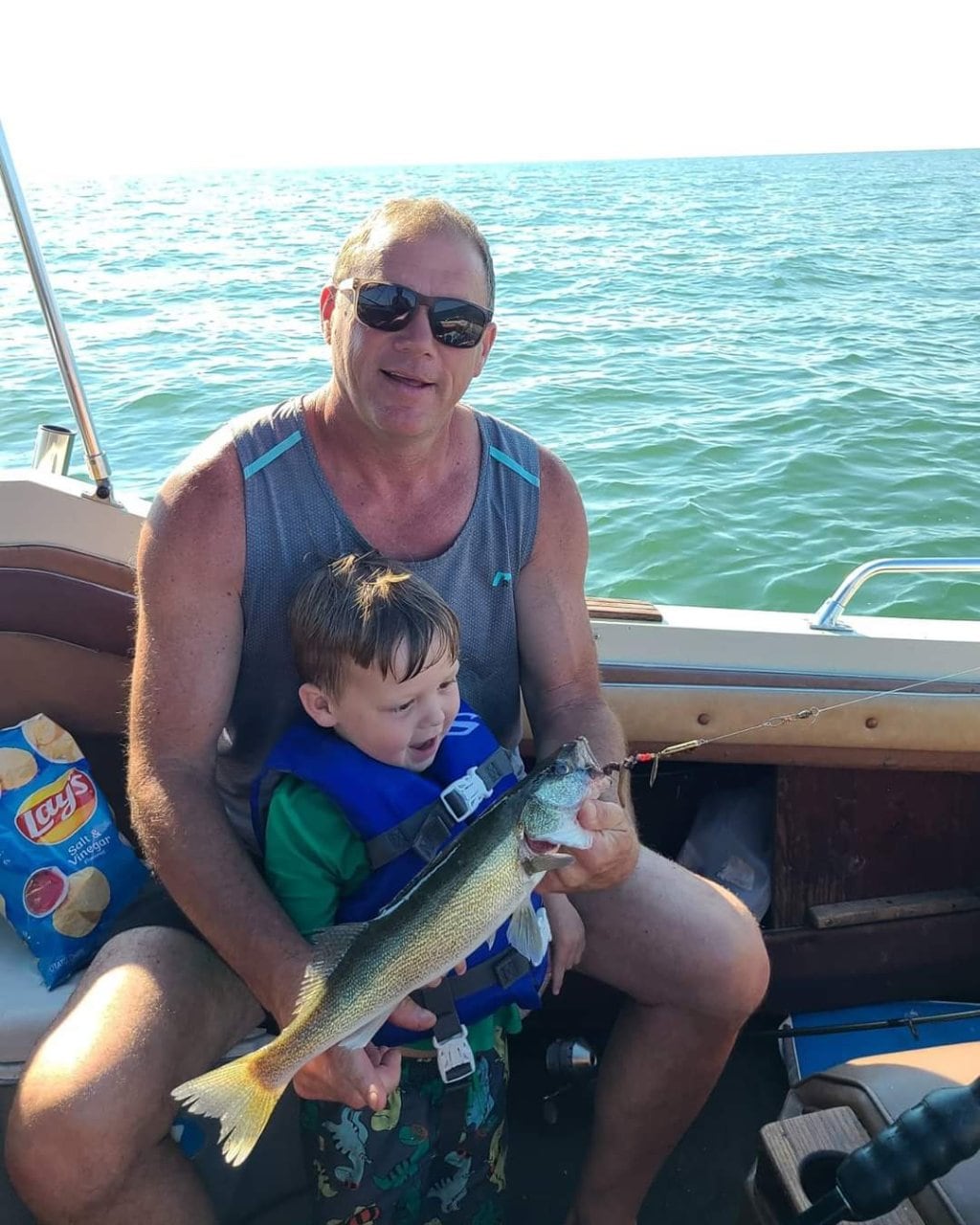During a Heart Attack, Time Equals Heart Muscle
With a 99% blockage, Jim Schultz had very little time to spare.
Bellevue resident Jim Schultz woke up around 3 a.m. on July 30 with pain he originally attributed to stress. He got up and sat in the living room for a while, but 30 minutes later he was feeling worse. 
“I went to wake my wife to tell her I wasn’t feeling well and to get the blood pressure
machine.” Jim said.

Almost as soon as his wife woke up, Jim noticed a tremor in his arm and the pain
in his chest get worse.
“My wife said, ‘No. We’re calling 911.’” Jim recalled.
Jim remembers being a little dazed while he waited for the ambulance, laying down with his eyes closed and holding his chest. Soon, two ambulances arrived and both crews came in.
“I vaguely remember the two ‘lead’ guys having a conversation,” Jim explained. “Bryan was insisting on Fisher‐Titus because of my situation. I didn’t fully understand what was going on at the time but I was just going with it.”
The person Jim remembers so clearly is North Central EMS Paramedic Supervisor, Bryan Hamman. Bryan remembers Jim very clearly.
“When I arrived I found Jim sitting in a chair in the living room and he did not look good,” Bryan recalled. “He was very pale, clammy, sweating, clutching his chest, and was short of breath. I knew at this moment he could be having a heart attack.”
The North Central EMS crew transported Jim from his home in Bellevue to Fisher‐Titus. On the way, Jim recalls the care Bryan provided in the ambulance.
“He talked me through everything,” Jim said. “He was very calm and reassuring. He gave out a really excellent vibe. The cardiologist later told me that he did everything perfect for me.”
Bryan remembers that ride from Bellevue to Fisher‐Titus and talking Jim through each step providing oxygen, aspirin, an IV, Nitroglycerin to relieve pain, a 12 lead ECG that transmits results to the Fisher‐Titus Emergency Departments, and continuous reassessment of vital signs and interventions.
“When a patient is faced with an emergency like this, they become anxious,” Bryan said. “My job is not only to provide the clinical skills needed, but also to be calm and reassuring, letting him know he is in good hands.”
Once they arrived at Fisher‐Titus, Jim was taken to the Emergency Room before heading to the cath lab to have a stent placed by a Fisher‐Titus Heart & Vascular cardiologist.
The ambulance had left Jim’s home at 5:02 a.m. and by 6 a.m., he was in his hospital bed recovering from the stent procedure.
“Everyone at the hospital gave me excellent attention,” Jim said. “They were so professional and very kind.”
Jim learned after the fact why it was so critical that he be brought to Fisher‐Titus instead of another facility: Fisher‐Titus is a Level 2 Adult Cardiac Catheterization Laboratory meaning his stent procedure could be performed here.
“Jim needed to be taken to a hospital with a cath lab and Fisher‐Titus has one…a very good one,” Bryan said. “The goal is to move quickly. Time is important at this point; time is heart muscle. We needed to get Jim to the cath lab fast.”
Had he been at another facility initially, Jim might have had to be transferred.
“I was 99% blocked,” Jim explained. “My odds would have dramatically decreased if I would have been taken somewhere else and had to have been transferred because of the time it would have taken.”
After the procedure, Jim was in the ICU at Fisher‐Titus for a day and a half before being discharged. Now he goes back regularly for follow ups and cardiac rehab.
“Patty and Michelle and everyone else in cardiac rehab are great,” Jim said. “I’m feeling pretty good. I still have a ways to go but I feel like I’m doing really well.”
As his strength and stamina increase, Jim looks forward to getting back to fishing and processing firewood to heat his home this winter.
Jim shared, “If you’re going to go through this experience, I’d like to have Fisher‐Titus on my side again.”
Learn more at fishertitus.org/heart.
